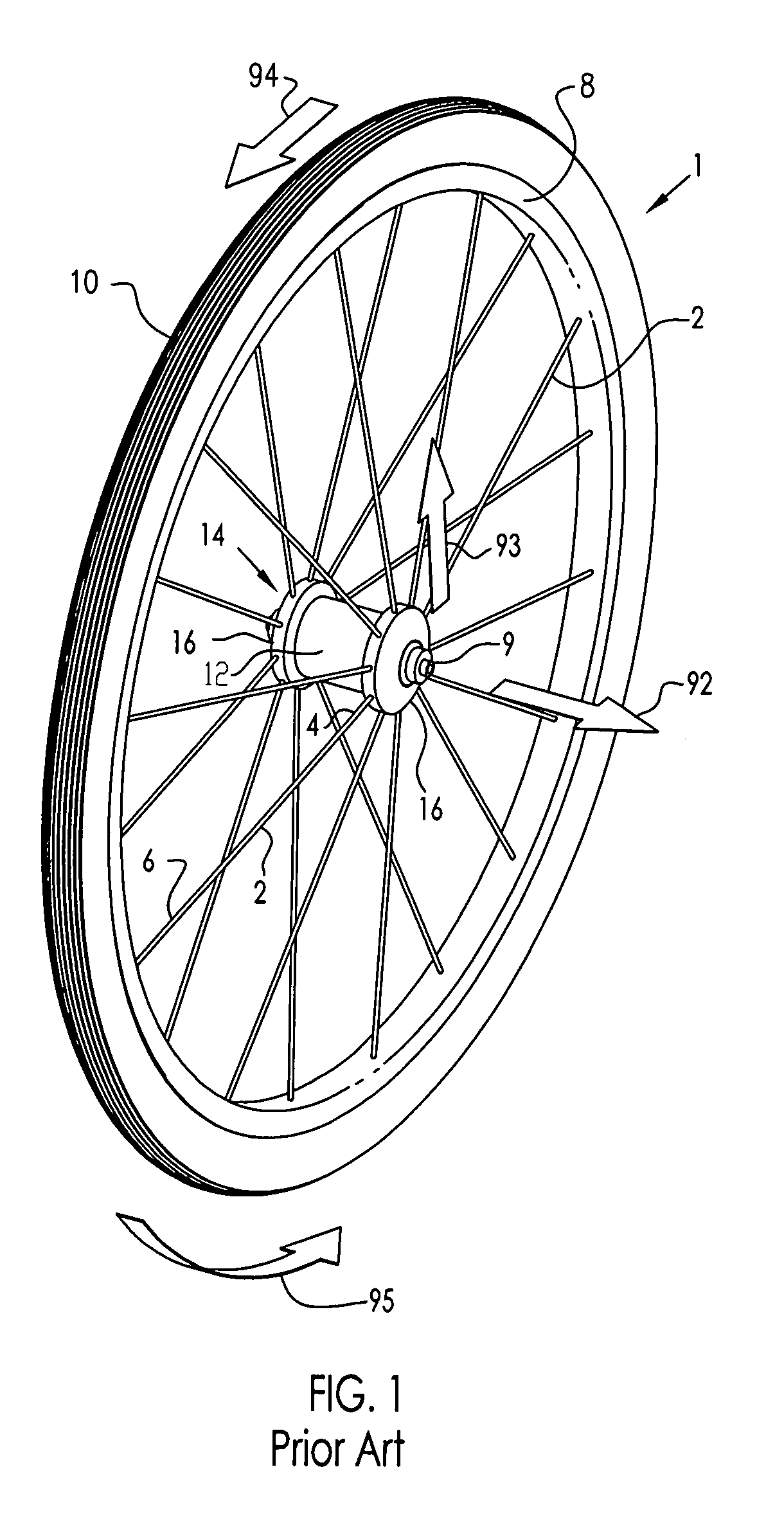Connecting system for tensile elements such as spokes
a technology of tensile elements and connecting systems, which is applied in the direction of manufacturing tools, couplings, transportation and packaging, etc., can solve the problems of increasing the weight of the wheel assembly, poor vibration-damping characteristics, and the steel spokes of the conventional bicycle wheel are quite heavy, so as to reduce the stress within the hub flange material, reduce the cost, and reduce the cost of components.
- Summary
- Abstract
- Description
- Claims
- Application Information
AI Technical Summary
Benefits of technology
Problems solved by technology
Method used
Image
Examples
Embodiment Construction
[0106]The present invention comprises a longitudinal tensile element having an end portion and a cross-section thereof, a bracing element, and a tensile axis of applied tensile load along the longitudinal tensile element. The longitudinal tensile element is connected to at least one bracing element via a welded connection between the longitudinal tensile element and either the bracing element or an intermediate element.
[0107]A longitudinal tensile element is a generally long slender element, with a length greater than its cross sectional width, and with a longitudinal axis extending generally along its length. The longitudinal tensile element includes sidewall surface(s) that extend generally along its length. As such, the longitudinal axis is generally parallel to the sidewall surface. Some examples of a longitudinal tensile element include the spoke of a vehicle wheel, a guy wire, a control cable, or a tendon. In most of the embodiments of the present invention, the longitudinal t...
PUM
 Login to View More
Login to View More Abstract
Description
Claims
Application Information
 Login to View More
Login to View More - R&D
- Intellectual Property
- Life Sciences
- Materials
- Tech Scout
- Unparalleled Data Quality
- Higher Quality Content
- 60% Fewer Hallucinations
Browse by: Latest US Patents, China's latest patents, Technical Efficacy Thesaurus, Application Domain, Technology Topic, Popular Technical Reports.
© 2025 PatSnap. All rights reserved.Legal|Privacy policy|Modern Slavery Act Transparency Statement|Sitemap|About US| Contact US: help@patsnap.com



